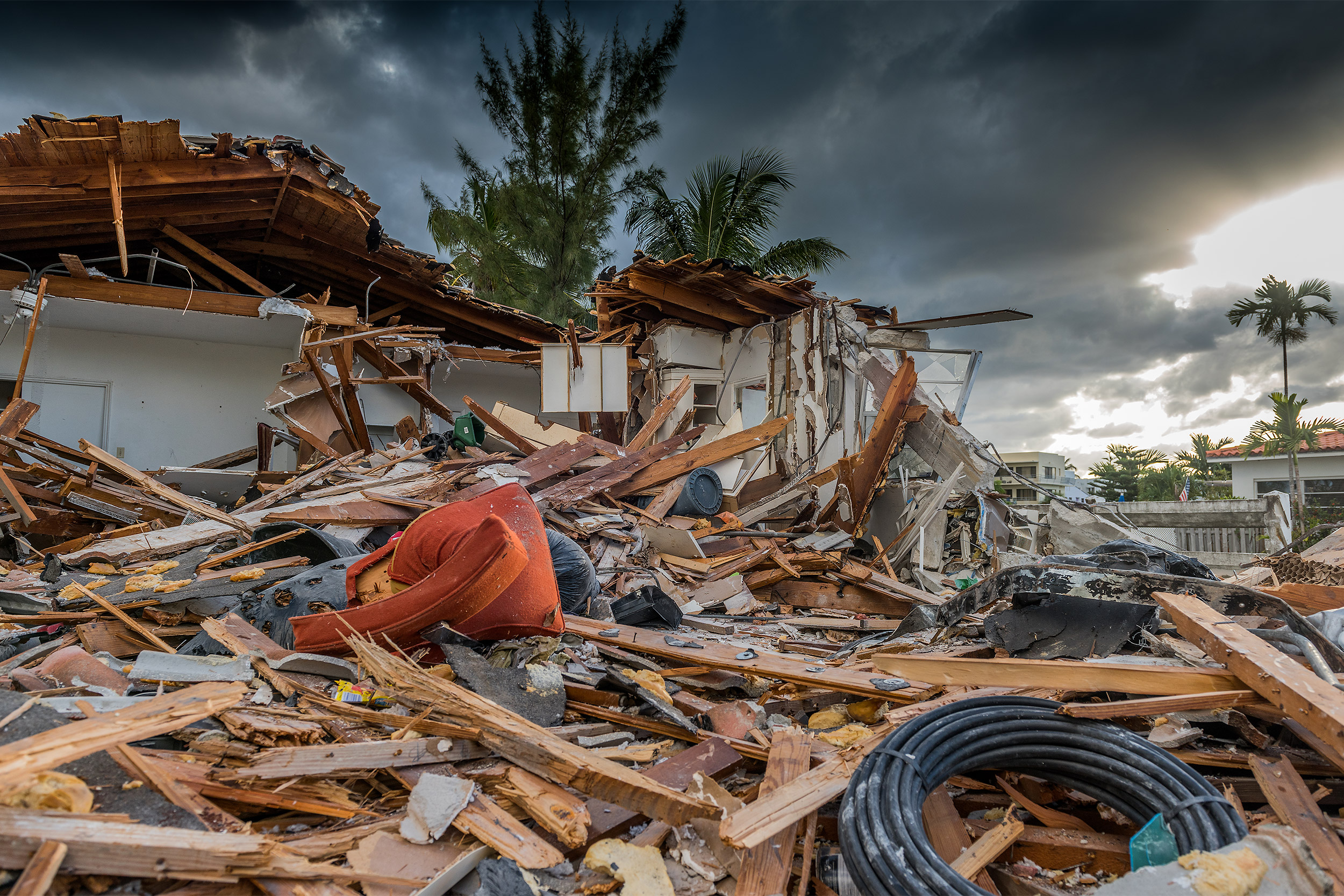
Cost of cleanups set to spiral with continued rise in CO2
Report finds billion-dollar natural disasters increased from three in 1980 to 22 in 2020
Since 1980, climate change-related natural disasters have cost the U.S. more than $2 trillion in recovery costs, according to findings from the Disaster Medicine Fellowship at Beth Israel Deaconess Medical Center.
The group’s paper was published in the Journal of Climate Change and Health.
To assess the relationship between rising carbon dioxide levels, temperatures, and the number of disasters costing a billion dollars or more in the United States, senior author Gregory Ciottone, director of the Disaster Medicine Fellowship, and colleagues analyzed data between 1980-2021 from the National Center for Environmental Information.
Starting in 1980, NCEI has kept track of disasters such as hurricanes, droughts, floods, winter storms, cold waves, and crop freeze events that exceeded a billion dollars in damages. Costs factored in include physical damage to infrastructure, agricultural losses and business interruption.
“Framing disasters in this economic light can bring more attention and motivation for change to alter policymakers’ decisions.”
Vijai Bhola, Disaster Medicine Fellowship graduate
The team found that the increases in atmospheric carbon dioxide levels and temperature —tightly linked to each other — were associated with increasing numbers of events per year, as well as fatalities. After adjusting dollar values for inflation, their analysis showed that more frequent and more severe disasters are incurring rising costs.
Among their findings
- As the global temperature rose by almost 1 degree Celsius, there was a steady increase in the frequency of billion-dollar disasters, from just three in 1980 to 22 in 2020.
- From 1980-1989, there were three billion-dollar events per year and 297 deaths per year, costing a total of $19.5 billion. By 2010-2019, the rise in carbon dioxide levels and temperature were linked with 13 annual events, 523 annual deaths, and $89.2 billion in recovery costs, a fourfold increase.
- In the last five years, the rise in carbon dioxide levels was associated with 18 events per year, 911 deaths per year, and $153 billion in recovery costs, almost double the amount spent in the previous decade.
“To truly mitigate the economic impacts of disasters, policies combating CO2 emissions and therefore temperature change are required,” said Ciottone, who is also president of the World Association for Disaster and Emergency Medicine and an associate professor of emergency medicine at Harvard Medical School. “Disaster Risk Reduction strategies can also lead to cost reductions and save human lives,” he added.
Disaster Risk Reduction emphasizes taking steps to reduce the harm and impact caused by disasters on society. Such measures include adopting the latest building codes and retrofitting critical disaster infrastructure lifelines such as telecommunications, roads, power and water infrastructure.
A study in 2005 estimated that for every $1 invested in disaster risk mitigation, $4 was saved in post-disaster rebuilding efforts. New data in 2019 showed $1 spent on mitigation measures could save $11 post-disaster.
“Framing disasters in this economic light can bring more attention and motivation for change to alter policymakers’ decisions,” said corresponding author Vijai Bhola, a graduate of the Disaster Medicine Fellowship at BIDMC, who notes the current analysis captures just a fraction of the costs incurred by climate change. “These costs represent a combination of immediate and longer-term restoration estimates. What they do not reflect, however, are factors such as destruction of natural resources or loss of life, and therefore these numbers significantly underestimate the true cost of climate-related disasters.”
Co-authors included Attila Hertelendy, Alexander Hart and Syafwan Bin Adnan of the Disaster Medicine Fellowship at BIDMC.
The authors declare that they have no known competing financial interests or personal relationships that could have appeared to influence the work reported in this paper. Hertelendy serves as an editor on the Journal of Climate Change and Health.
This work was conducted with support from Harvard Catalyst/ The Harvard Clinical and Translational Science Center, the National Center for Advancing Translational Sciences, the National Institutes of Health (UL1TR002541) and Harvard University.





